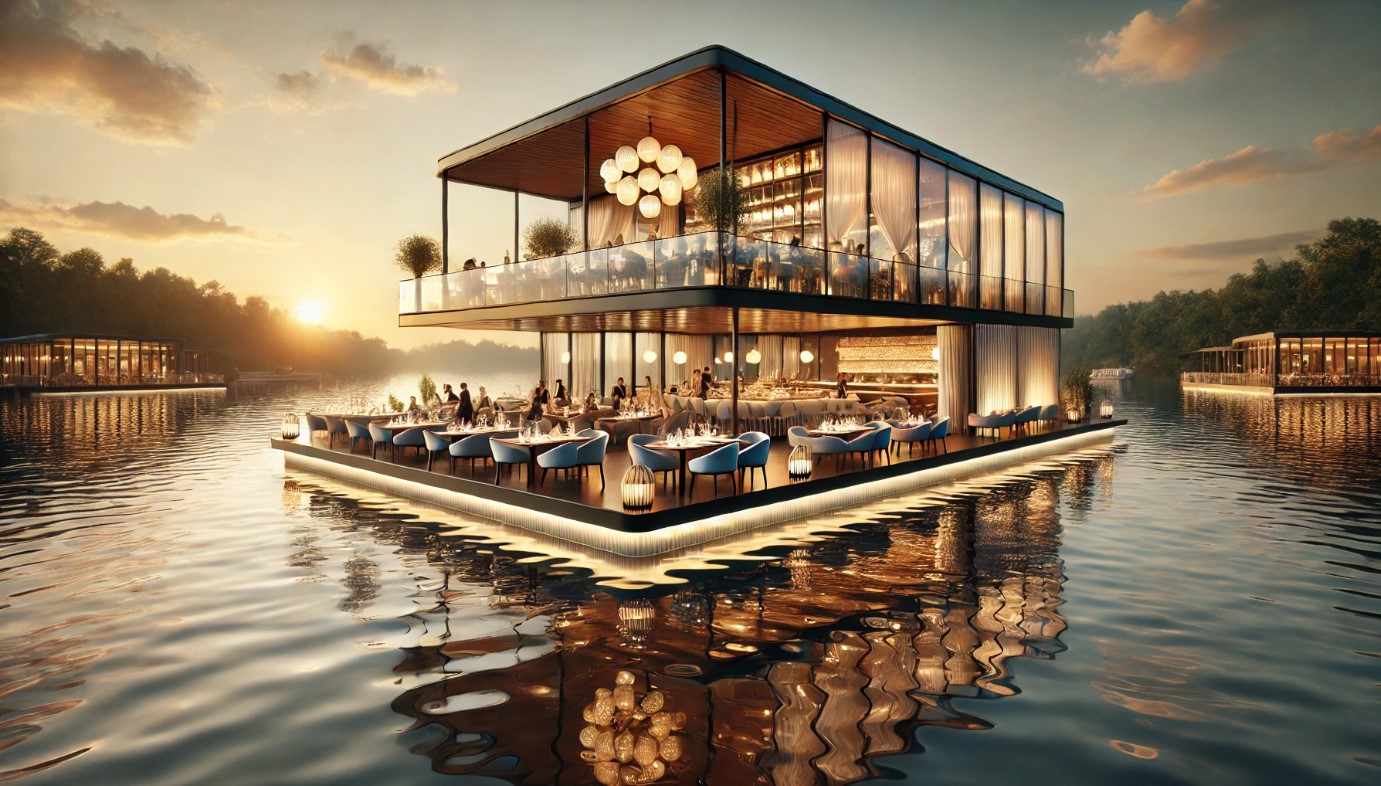As our planet contends with the dual challenges of rising sea levels and diminishing land resources, the concept of water-based communities, or as we like to call it Aqua Urbanism, presents an increasingly compelling solution. This innovative approach to human habitation offers not only a visionary glimpse into the future but also a pragmatic response to some of today’s most pressing environmental issues. By embracing the vast expanses of water that cover over 70% of the Earth’s surface, we discover not just a new frontier for living but a promising avenue for sustainable and resilient development. This article emerges from the result of a unique collaboration between practitioners with on-the-ground experience and forward-thinking visionaries, aiming to explore the multifaceted dimensions of living on water.

The Genesis of Water-Based Communities
Throughout history, humans have ingeniously adapted to living on water, from the floating reed islands of the Uros in Lake Titicaca to the stilt houses of Southeast Asia’s coastal and riverine cultures. In a forthcoming article, we will delve deeper into the historical civilizations that thrived on and with water, providing a richer context for these early adaptations, which were born out of necessity, resourcefulness, and a deep understanding of local environments. Today’s resurgence in aquatic living is not merely a nod to these ancient practices but is driven by pressing modern-day catalysts. Environmental challenges such as climate change and sea-level rise, coupled with advancements in technology and shifts in socio-economic frameworks, are compelling us to reconsider water as a viable space for habitation.

Architectural and Environmental Considerations
The construction of floating homes and communal spaces necessitates a careful selection of materials that ensure buoyancy, durability, and harmony with the aquatic environment. It is essential to explore innovative architectural solutions that enable comfortable and sustainable living on water, ranging from modular designs that adapt to community needs to materials that resist corrosive marine conditions while minimizing environmental impact. Equally paramount are the sustainability practices embedded within these communities, including the integration of renewable energy sources such as solar, wind, and tidal power, which provide clean, autonomous power solutions. Advanced water recycling and sophisticated waste management systems are key components in maintaining the delicate balance between human habitation and the aquatic environment. It is crucial to implement measures to protect marine life, such as eco-friendly anchoring systems that avoid damaging the seabed, artificial reefs that support local biodiversity, and community guidelines that promote responsible interaction with the surrounding marine environment.

Society and Culture in Aquatic Communities
The unique setting of these water-based habitats fosters the development of distinctive social structures and a profound sense of belonging among residents. It is important to understand the communal bonds formed in response to the shared experiences and challenges of aquatic living and how these tight-knit communities emerge as a microcosm of collaborative and sustainable living. Cultural adaptation plays a pivotal role in the evolution of these communities, as traditional land-based practices are reimagined to align with the fluid nature of life on water. The emergence of new traditions, rituals, and daily routines, deeply influenced by the aquatic environment, unveils the rich tapestry of cultural practices that define and enrich these floating communities. Furthermore, an examination of the role of advanced communication tools, smart infrastructure, and management platforms reveals their significance in enhancing social cohesion and operational efficiency within these communities.

Economic and Legal Frameworks
The unique environment of aquatic habitats offers a wealth of economic opportunities, from sustainable aquaculture practices that ensure a steady supply of seafood without depleting wild stocks to marine biotechnology ventures that leverage the sea’s biodiversity for medical and technological innovations. The allure of living on water and the unique lifestyle it offers can also significantly enhance eco-tourism, providing an economic boost to these communities through immersive experiences that showcase sustainable living and the beauty of marine environments. However, the expansion of water-based communities into international waters introduces complex legal and jurisdictional challenges. A critical analysis of the current maritime law framework is necessary, addressing sovereignty issues, rights to water column and seabed resources, and environmental regulations. Furthermore, exploring innovative legal structures is essential to facilitate the sustainable development of aquatic communities, ensuring their operation within a clear legal framework while promoting economic viability and environmental stewardship.

In conclusion, water-based living emerges as an important innovation, offering solutions to some of the most pressing environmental challenges of our time. As we’ve explored, the adaptation to aquatic habitats not only revisits historical ingenuity but also aligns with modern sustainability practices and technological advancements. This lifestyle represents a symbiosis of environmental stewardship, community cohesion, and economic potential. As society stands at the cusp of this aquatic renaissance, it is imperative that readers, policymakers, and innovators alike champion the development of these sustainable communities. Together, we have the opportunity to shape a future that floats on the promise of resilience, adaptability, and harmonious living with the water worlds of our planet.



